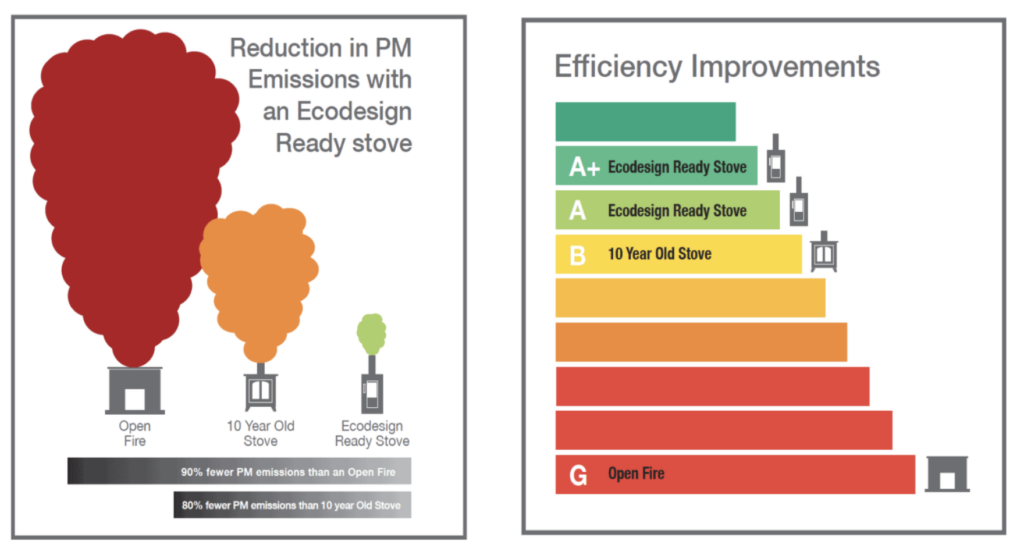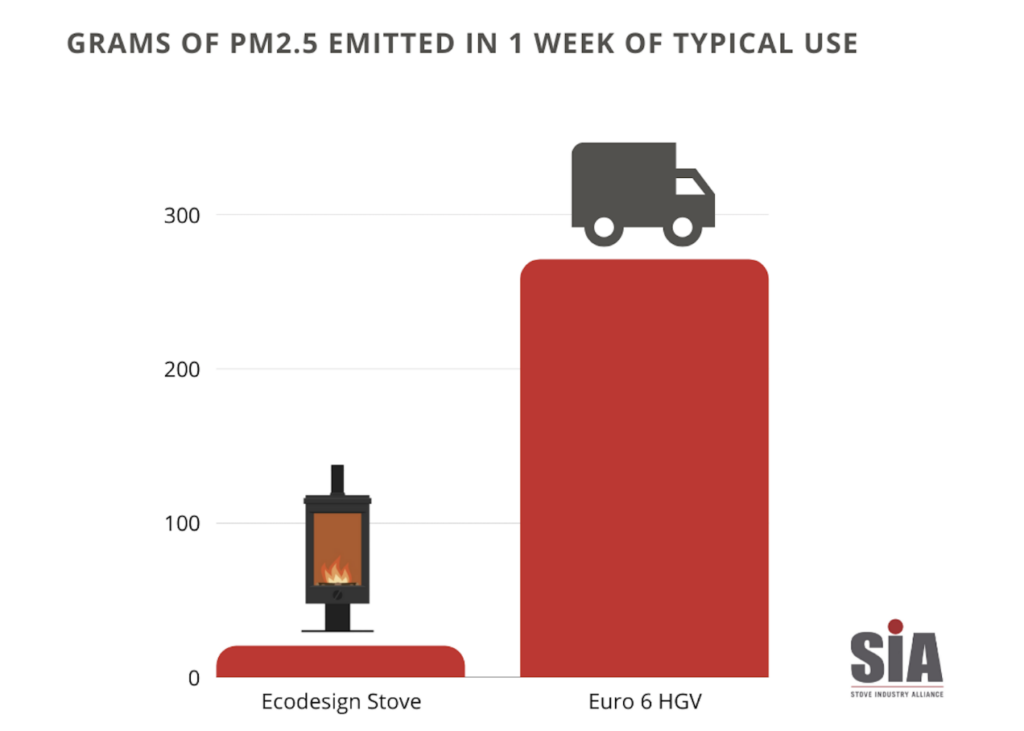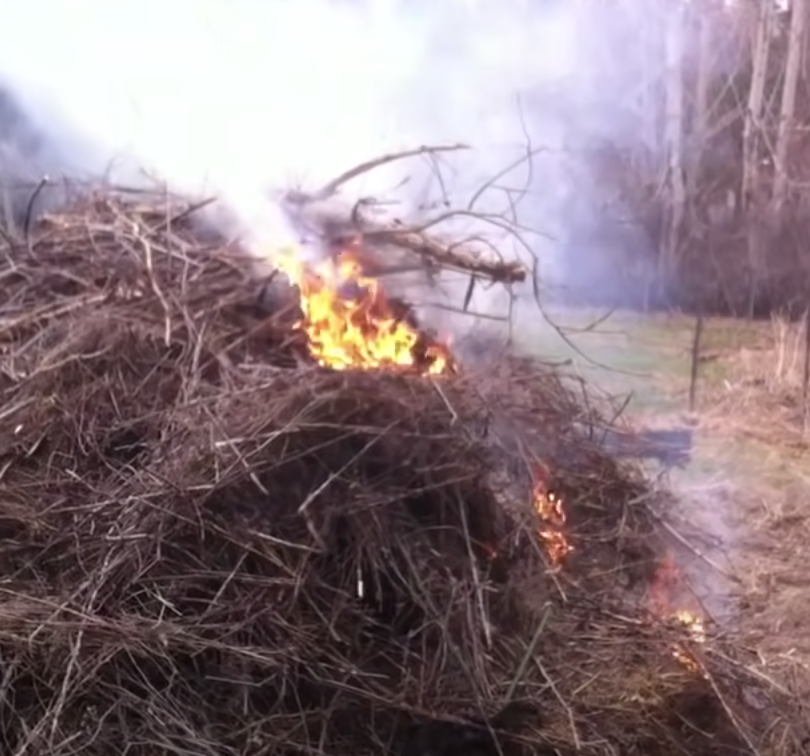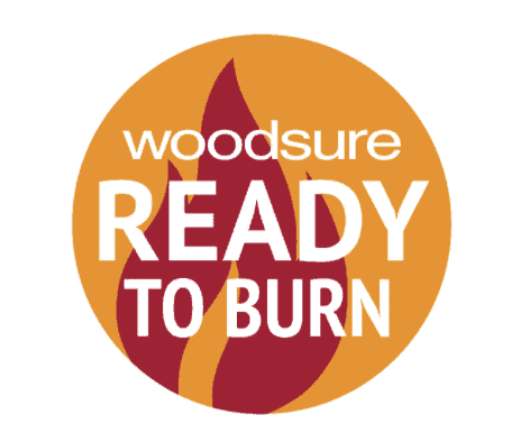An Ecodesign stove is highly efficient and cost-effective. They also have a very low carbon footprint. Wood has less than 10% of the carbon intensity of gas, electricity and oil fuel. An Ecodesign wood-burning stove used with correctly seasoned wood fuel at or below 20% moisture content releases almost no visible smoke from the chimney. Such stoves emit up to 90% less particulate emissions (PM) than an open fire and up to 80% less than many older stoves.

So why is the question “will wood-burning stoves be banned” bouncing around in the media?
There is a lot of misinformation being thrown around in the media currently which, unfortunately, is tainting all methods of burning wood.
It’s important that we get the facts straight. Not all types of wood burning create the same level of pollution.
The statement that domestic wood burning is the single largest source of PM2.5 air pollution has been disputed by manufacturers and professional bodies alike for some time. The reason for this dispute is that the calculations on which this statement is based are fundamentally flawed.
The HGV Comparison:
One particularly misleading comparison was comparing emissions from a wood-burning stove with that of an HGV. Such claims stated that an Ecodesign stove produces the same amount of particulate emissions (PM) as 750 modern HGVs. The source of the original HGV figure was actually from a report by the European Environmental Bureau. This report looked at the amount of PM2.5 emissions given off by generating a GJ (gigajoule) of heat in a stove, compared to the amount generated by creating a GJ of power in an HGV. The major flaw with this comparison is that these claims are based on very crude calculations using permitted rates of emissions. They did not consider either real-world or non-exhaust emissions. Also, these permitted emission rates greatly rely on differing measurement protocols and techniques.
Defra Report:
A Defra report completed by Kantar shows on average stove users light their appliances for 29 hours a week, so around 3.7 hours and 4.5 hours a day in the winter. In reflection, an HGV can be driven by the same driver for 9 hours a day, all year round. Stoves mainly are only ever used in autumn and winter. Over the course of a week, a typical stove will emit 20.16g of PM2.5. A Euro 6 HGV will emit 271g of PM2.5 – so around 13 times the amount of a stove. There are also other points to consider. Emissions from stoves are typically released at over 5 meters, while emissions from an HGV are typically emitted less than 1 meter from the ground.
These comparisons don’t even look at non-exhaust emissions either. PM2.5 from tyres and brake dust is significant, especially so when you consider some HGVs are 40 tones or more and have 18 wheels. That is a lot of tyre wear and brake dust.

Stoves Can Be Carbon Neutral – which is good for the environment:
If used correctly, stoves can be carbon natural. Burning correctly seasoned wood on an Ecodesign stove can produce less carbon dioxide than if the wood was left to rot on the floor of a forest.
It’s been reported that worldwide, dead and decaying wood releases around 10.9 gigatons of carbon every year. This is around 115% of annual fossil fuel emissions.
If trees are planted at the same rate as they die you have a sustainable and renewable energy source. Trees capture carbon dioxide from the air. As water moves up the trunk and into the branches of the trees, along with the presence of sunlight, a process known as photosynthesis occurs. The carbon dioxide and water essentially mix, resulting in the release of oxygen back into the atmosphere. It can’t be emphasised enough, however – you must burn correctly seasoned wood and use a high-efficiency stove to produce the lowest carbon output. An open fire where you burn unseasoned wood will certainly not be carbon neutral.
Don’t trees absorb CO2 from the atmosphere then release all the CO2 and undo all the good when burnt?
This has been mentioned across various media and is inaccurate. It’s overly simplistic and wrong to assume, with regards to harvesting for firewood, that one healthy tree is cut down in full and then chopped up and burnt for firewood. The fact is thriving, healthy trees are not cut down for firewood. More often than not firewood comes from the thinning of healthy trees to allow the growth of mature trees and the removal of dead, damaged or dying trees.
The removal of these trees and thinning from woodland promotes better, more rapid growth of the remaining biomass. So the thinning of mature trees for firewood and the removal of dying trees actually helps the increased absorption of CO2.

Irresponsible Wood Burning Needs to be Addressed
One reason why domestic wood burning in general has received a negative press in recent times is that some are irresponsibly burning wood.
Irresponsibly burning wood increases smoke and pollution. Examples of irresponsible wood burning include:
1. Burning wet wood (unseasoned)
2. Burning treated or painted wood
3. Burning chipboard or plywood
4. Burning paper or cardboard
5. Burning anything considered unsuitable for a wood-burning stove
While an open fire is not considered irresponsible burning they are incredibly inefficient compared to an Ecodesign stove. Bonfires, while perhaps unfair to class as irresponsible be aware that you cannot get rid of household waste if it will cause pollution or harm people’s health. This includes burning it. The same points apply to bonfires as they do to other methods of burning wood.
Things to remember with a wood-burning stove:
When lighting a fire, make sure you:
• Use the right amount of kindling
• Stack wood loosely in the firebox so air can circulate with ease
• Avoid putting too much firewood in at the start
• Avoid using wet or green wood, as this will produce poor heat and excessive smoke
Once the fire is alight, make sure you:
• Keep the fire burning brightly
• Keep the air control open for at least 2-3 minutes
• Avoid blocking the air supply to the base of the fire with a badly positioned log
• Burn a few smaller logs, as opposed to a very large one
• If you add logs, open up the air control to high for at least 2-3 minutes
• Never damp the fire down
• Never let your fire burn out overnight

These tips will help ensure your safety along with maximising the efficiency of your stove. We have mentioned avoiding burning wet wood a number of times – we do this as it is one of the main culprits which contribute to excessive pollution.
Logs now sold in sizes less than 2m3 must be certified as Ready to Burn. The Ready to Burn scheme makes it easy for people to find the cleanest fuels for burning at home.
Using fuels that are approved and labelled as Ready to Burn also means it’s easy to comply with Air Quality (Domestic Solid Fuels Standards) (England) Regulations 2020 that outlaw the sale of wet wood and housecoal, which are the most polluting fuels.
To answer the question – will wood-burning stoves be banned? Hopefully, the facts and information above will answer this for you. Furthermore, the UK government have stated there are no plans to ban wood-burning stoves. As a stove user, you need to do your bit and make sure you are minimising emissions.








